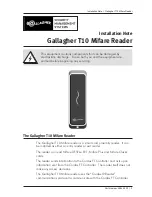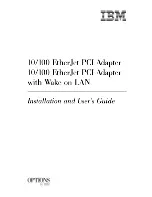
10-8
SL240 XMC User Guide
APPENDIX D
Copyright 2017
10.5 Parallel FPDP Signal Timing
Figure D-2 shows the timing for several FPDP interface signals. This figure is accurate for all
four data framing types. See Appendix D for a discussion of framing. The Data Valid signal, /
DVALID, is asserted by the FPDP-TM when valid data is transmitted onto the FPDP bus but not
before at least 16 STROBE periods have occurred. The FPDP-TM must de-assert /DVALID
when no more data remains in its buffer until valid data is again available. To avoid losing data
when the receiver’s FIFO is almost full, the receiver (FPDP-RM or FPDP-R) must assert the /
SUSPEND signal to hold off the transmitter. The FPDP-TM must de-assert /DVALID within 16
STROBE periods and keep it de-asserted until /SUSPEND is de-asserted. Per the FPDP
specification, after /SUSPEND is de-asserted, the FPDP-TM must wait for at least one STROBE
period before re-asserting /DVALID. With the SL240, after /SUSPEND is de-asserted, the
FPDP-TM must wait for at least two STROBE periods before re-asserting /DVALID. The /
SUSPEND signal is asynchronous to the STROBE clock and should be double synchronized by
the FPDP-TM before being used in order to avoid metastability problems.
The FPDP-TM must not transmit data onto the FPDP bus until the Not Ready signal, /NRDY, is
de-asserted by the FPDP-RM and FPDP-R devices. The FPDP-RM and FPDP-R devices must
assert /NRDY when they are not ready to accept data and must de-assert /NRDY otherwise. The
/NRDY signal is asynchronous to the STROBE clock and should be double synchronized by the
FPDP-TM before being used in order to avoid metastability problems.
As required by the
Front Panel Data Port Specifications, ANSI/VITA 17-1998,
the FPDP-TM
transmits the Data Direction signal /DIR.FPDP-RM and FPDP-R devices may receive /DIR. The
/DIR signal is not given a firm definition of use. Possible uses of this signal include providing a
status indication available to be read by software or to allow operation to be inhibited until /DIR is
asserted. The /DIR signal may be asynchronous with other FPDP signals. An SL240 FPDP-R or
FPDP-RM inverts and passes this signal from the FPDP interface to the link interface. DIR is an
active-high signal on the link interface. /DIR is an active-low signal on the FPDP interface.
Two user-defined Programmable I/O (PIO) signals, PIO1 and PIO2, are reserved in the
Front
Panel Data Port Specifications
. These are auxiliary signals, and are not required for core FPDP
functions. However, these signals can be user-defined to allow the FPDP-TM, FPDP-RM, and
FPDP-R devices to transfer information that is not part of the FPDP specifications. The FPDP-
TM, FPDP-RM, and FPDP-R devices must not drive either of the PIO lines immediately at
power up of the system. This is to avoid the possibility of two devices driving the same PIO line
simultaneously and causing damage to the driver device.
Summary of Contents for FHA5-XE1MWB04-00
Page 2: ......
Page 6: ......
Page 7: ......
Page 8: ......
Page 9: ...SL240 XMC PCIe Card 1 FOREWORD ...
Page 10: ......
Page 13: ...SL240 XMC PCIe Card 2 INTRODUCTION ...
Page 14: ......
Page 18: ......
Page 19: ...SL240 XMC PCIe Card 3 TECHNICAL SUPPORT ...
Page 20: ......
Page 22: ......
Page 23: ...SL240 XMC PCIe Card 4 PRODUCT OVERVIEW ...
Page 24: ......
Page 35: ...SL240 XMC PCIe Card 5 INSTALLATION ...
Page 36: ......
Page 42: ......
Page 43: ...SL240 XMC PCIe Card 6 OPERATION ...
Page 44: ......
Page 49: ...SL240 XMC PCIe Card 7 APPENDIX A ...
Page 50: ......
Page 59: ...SL240 XMC PCIe Card 8 APPENDIX B ...
Page 60: ......
Page 66: ......
Page 67: ...SL240 XMC PCIe Card 9 APPENDIX C ...
Page 68: ......
Page 71: ...SL240 XMC PCIe Card 10 APPENDIX D ...
Page 72: ......




































